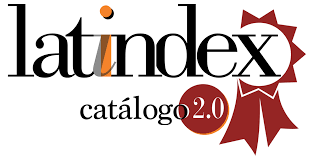Vestir la política: la indumentaria como estrategia en comunicación electoral/Dress politics: clothing as strategy in electoral communication
DOI:
https://doi.org/10.5783/revrrpp.v9i18.606Palabras clave:
comunicación política, comunicación electoral, relaciones públicas, moda, color políticoResumen
Esta investigación de carácter cuantitativo-descriptivo, examina, mediante análisis de contenido, la vestimenta empleada durante la campaña electoral por los cuatro candidatos a presidir la Junta de Andalucía en los comicios del 2 de diciembre de 2018. La muestra está compuesta por 59 estilismos, en los que se estudian variables como: color y carácter formal o informal de la indumentaria, tipo de calzado o complementos. Se pretende responder al interrogante, tradicionalmente formulado en el imaginario colectivo de la sociedad, de si la forma de vestir en política expresa valores ideológicos, con el objeto de comprobar si existe una tendencia o patrón que vincule la ropa empleada por los representantes públicos con la ideología del partido al que pertenecen, ya sea de derechas o de izquierdas.
Palabras clave: comunicación política, comunicación electoral, relaciones públicas, moda, color político.
Abstract
Fashion has been analyzed from different knowledge areas by a huge amount of academic works and approached as a philosophical, psychological, sociological and historic phenomenon. However, other disciplines such as marketing, education, communication, economy have also dedicated part of their efforts to their analysis. In the field of politics, which this research approaches, texts around the study of fashion have focused mainly on the perspective of nonverbal communication, which refers to many other aspects, not only the ones related to the way of dressing.
Especially, during election time, politicians attempt to prepare their speeches, but they are fully aware of that not only what they say and how they say is important, but also the image they show and, consequently, the way of dressing is decisive; even more after the arrival of the TV, since it is focused on visual attention.
Fashion has its own language that is useful to know what people want to tell us when they wear a thing or another. Although, traditionally, this has been a phenomenon associated with women, nowadays the distinction between genders is less pronounced and both, women and men, are interested in choosing their suits in the same way. Apart from this assessment, regarding the gender, the worry about fashion is not trivial because “the image is full of message” (Morejón, 2010) and all political parties are equally concerned.
Traditionally, aspects such as clothing color or the use of more serious or informal styles have let us know the candidates and the ideological formation they have. The actual investigation wants to answer the question, in the construction of the collective thinking about society, of whether the way of dressing of different politicians, who are representing us, express ideological values, with the intention of being able to set whether there are a trend or an inclination that link up clothes worn by public representatives with the ideology of the party to which they belong, either left or right.
Through a quantitative-descriptive research and applying the methodology of content analysis, we analyzed the dressing used during the fifteen days of the electoral campaign by the four candidates to preside over the Junta de Andalucía in the elections of December 2, 2018: Susana Díaz, for the Partido Socialista, Teresa Rodríguez, for Adelante Andalucía, Juanma Moreno, for Partido Popular and Juan Marín, for Ciudadanos.
The sample is made of a total of 59 kind of styles, where we have studied variables such as color and formal or informal character of clothing, type of footwear, accessories, etc. We have selected the styles of public events with more media projection, focusing on the acts of party or central rallies of the day, rather than the rest of citizen meetings that could have in their agendas. The analysis period took the entire electoral campaign, including from Friday November 16, to Friday 30 of the same month.
The results achieved reflect how, apart from small nuances that tip the balance in favor of one or another ideological line, the speech about clothing is quite homogeneous. So, fashion has stopped working as a tool that allows the ideological identification.
The traditional color association and the way of dressing in the different political parties is (in the electoral campaign analyzed) vague and hide the andalusian accent, trying to approach the traditional culture through the use of flounced dresses and polka dots in blouses and scarves, hoop earrings and the use of chromatic symbology to remind us typical elements of the autonomous community of Andalucía, such as blue for the sea; green and white for the flag; the white isolated that remembers southern sunlight or the brown which recalls the land, being key elements for two of the most productive sectors in the region: agriculture and livestock.
Keywords: political communication, electoral communication, public relations, fashion, political color
Descargas
Citas
BAEZA, N. S. (2012). Cómo se construyó el candidato: Un estudio de caso sobre Imagen Política (tesis doctoral). Universidad Nacional de La Plata, Argentina. Recuperado de http://www.memoria.fahce.unlp.edu.ar/tesis/te.836/te.836.pdf
BARNARD, M. (1996). Fashion as communication, London: Routledge.
BIANCHI, M. (3 de marzo de 2012). La imagen del poder. ABC. Recuperado de https://www.abc.es/estilo/abcp-imagen-poder-201203030000_noticia.html
BREWARD, C. (1995). The culture of fashion: A New History of Fashionable Dress, New York: Manchester University Press.
CENTENO, P. (2012). Política y moda. La imagen del poder, Barcelona: Península.
CENTENO, P. (2013). Espejo de Marx. ¿La izquierda no puede vestir bien?, Barcelona: Atalaya.
CRAIK, J. (1993). The face of fashion: Cultural studies in fashion, London: Routledge.
DAVIS, F. (1992). Fashion, culture, and identity, Chicago: University of Chicago Press
DE LA RIVA, L. (2012). La indumentaria como herramienta de comunicación política (proyecto de graduación). Universidad de Palermo, Italia. Recuperado de https://fido.palermo.edu/servicios_dyc/proyectograduacion/detalle_proyecto.php?id_proyecto=914
ENTWISTLE, J. (2000). The fashioned body: Fashion, dress and social theory, Oxford: Polity Press.
ESKIBEL, D. (2015). Campaña electoral: cómo viajar del Caos a la Estrategia. Recuperado de https://maquiaveloyfreud.com/libros-biblioteca/
FLÜGEL, J. C. (1930). The psychology of clothes, Oxford: Hogarth.
GARCÍA, L. y PRIMO, C. (2014). El nuevo traje del emperador: Por qué hay más política en una colección de Zara que en un ejemplar de Le Monde Diplomatique, Madrid: Capitán Swing.
IPARRAGUIRRE, A. (3 de mayo de 2010). El arte de vestir bien en política. El Diario Vasco. Recuperado de https://www.diariovasco.com/v/20100503/politica/arte-vestir-bien-politica-20100503.html
LENMANN, C. R. (2008). La política en el guardarropa. Las crónicas de moda de Francisco Zarco y el proyecto liberal. Revista iberoamericana, 74(222), 133-143.
MARTÍN, J. A. (2008). Como utilizar la telegenia para convencer. La imagen política como producto electoral. MK. Marketing y Ventas para Directivos, 23(232), 8-16.
MARTÍNEZ, A. (1996). Elementos para una teoría social de la moda. Sociológica. Revista de pensamiento social, (1), 97-123. Recuperado de https://ruc.udc.es/dspace/handle/2183/2687
MIGUELES, L. C. y GORDILLO, P. D. C. (2014). El hombre vestido. Una visión sociológica, psicológica y comunicativa sobre la moda. Cartaphilus. Revista de investigación y crítica estética, 12, 60-83. Recuperado de https://revistas.um.es/cartaphilus/article/view/216111/170421
MOREJÓN, Y. (24 de febrero de 2010). La vía más directa de seducción. Yuri Morejón. [Blog]. Recuperado de http://www.yurimorejon.com/2010/02/la-via-mas-directa-de-seduccion/
NEGRIN, L. (1999). The self as image: a critical appraisal of postmodern theories of fashion. Theory, culture & society, 16(3), 99-118. doi: 10.1177/02632769922050638
OREJUELA, S. (2009). Personalización política: la imagen del político como estrategia electoral. Revista de Comunicación, (8), 60-83.
ORTIZ, A. S. (1999). El color, símbolo de poder y orden social: apuntes para una historia de las apariencias en Europa. Espacio Tiempo y Forma. Serie IV, Historia Moderna, (12). doi: 10.5944/etfiv.12.1999.3386
OTAZO, G. (24 de junio de 2015). Campañas de colores: nuevas estrategias de persuasión y comunicación. Beers&Politics. [Blog]. Recuperado de https://beersandpolitics.com/campanas-de-colores-nuevas-estrategias-de-comunicacion-y-persuasion
REY, J. (2006). Los "metrosexuales" y "übersexuales" como artefactos publicitarios. Comunicar, 27, 19-27.
RICHARD, E. (2008). Álvaro Uribe: la comunicación por la imagen. Principios de marketing político. Ópera, (8), 73-100. Recuperado de https://revistas.uexternado.edu.co/index.php/opera/article/view/760
SQUICCIARINO, N. (1990). El vestido habla: consideraciones psicosociológicas sobre la indumentaria, Madrid: Cátedra.
VALDEZ, A. (2019). Las relaciones públicas en las campañas electorales. Correspondencias & Analisis, (9), 51-63. doi: 10.24265/cian.2019.n9.03
VALDEZ, A., HUERTA, D. A. y DÍAZ, S. (2012). El color como parte de la estrategia de persuasión política: El caso de los XVI Juegos Panamericanos, Guadalajara 2011. Contratexto, (020), 29-51. doi: 10.26439/contratexto2012.n020.171
VIEDMA, P. M. (2017). Sociología de la moda, un punto de vista privilegiado. Vínculos de Historia. Revista del Departamento de Historia de la Universidad de Castilla-La Mancha, (6), 171-187. doi: 10.18239/vdh.v0i6.009
Descargas
Publicado
Cómo citar
Número
Sección
Licencia
Los autores que publican en esta revista están de acuerdo con los siguientes términos:- Los autores conservan los derechos de autor y garantizan a la revista el derecho de ser la primera publicación del trabajo al igual que licenciado bajo una Creative Commons Attribution License que permite a otros compartir el trabajo con un reconocimiento de la autoría del trabajo y la publicación inicial en esta revista.
- Los autores pueden establecer por separado acuerdos adicionales para la distribución no exclusiva de la versión de la obra publicada en la revista (por ejemplo, situarlo en un repositorio institucional o publicarlo en un libro), con un reconocimiento de su publicación inicial en esta revista.
- Se permite y se anima a los autores a difundir sus trabajos electrónicamente (por ejemplo, en repositorios institucionales o en su propio sitio web) antes y durante el proceso de envío, ya que puede dar lugar a intercambios productivos, así como a una citación más temprana y mayor de los trabajos publicados (Véase The Effect of Open Access) (en inglés).




